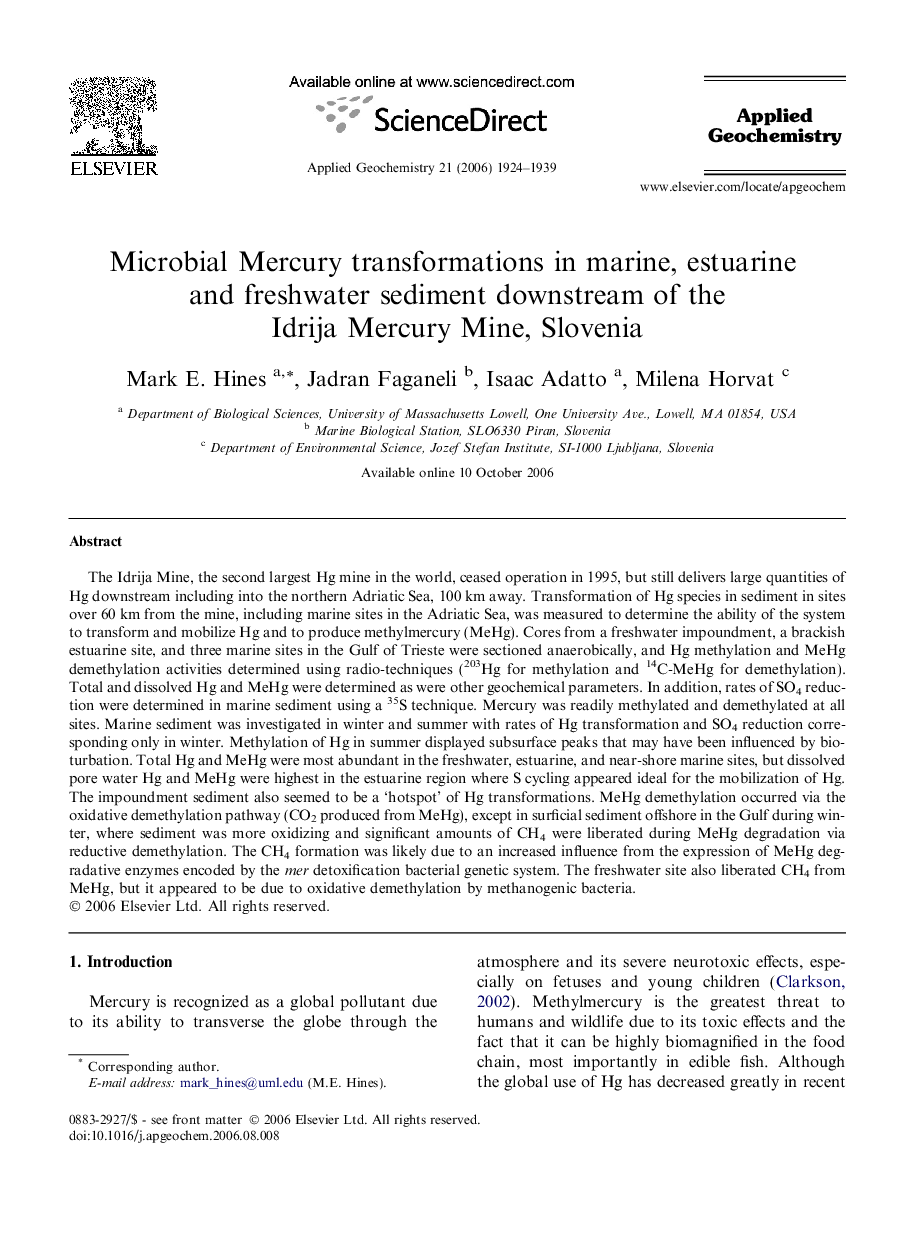| Article ID | Journal | Published Year | Pages | File Type |
|---|---|---|---|---|
| 4436911 | Applied Geochemistry | 2006 | 16 Pages |
The Idrija Mine, the second largest Hg mine in the world, ceased operation in 1995, but still delivers large quantities of Hg downstream including into the northern Adriatic Sea, 100 km away. Transformation of Hg species in sediment in sites over 60 km from the mine, including marine sites in the Adriatic Sea, was measured to determine the ability of the system to transform and mobilize Hg and to produce methylmercury (MeHg). Cores from a freshwater impoundment, a brackish estuarine site, and three marine sites in the Gulf of Trieste were sectioned anaerobically, and Hg methylation and MeHg demethylation activities determined using radio-techniques (203Hg for methylation and 14C-MeHg for demethylation). Total and dissolved Hg and MeHg were determined as were other geochemical parameters. In addition, rates of SO4 reduction were determined in marine sediment using a 35S technique. Mercury was readily methylated and demethylated at all sites. Marine sediment was investigated in winter and summer with rates of Hg transformation and SO4 reduction corresponding only in winter. Methylation of Hg in summer displayed subsurface peaks that may have been influenced by bioturbation. Total Hg and MeHg were most abundant in the freshwater, estuarine, and near-shore marine sites, but dissolved pore water Hg and MeHg were highest in the estuarine region where S cycling appeared ideal for the mobilization of Hg. The impoundment sediment also seemed to be a ‘hotspot’ of Hg transformations. MeHg demethylation occurred via the oxidative demethylation pathway (CO2 produced from MeHg), except in surficial sediment offshore in the Gulf during winter, where sediment was more oxidizing and significant amounts of CH4 were liberated during MeHg degradation via reductive demethylation. The CH4 formation was likely due to an increased influence from the expression of MeHg degradative enzymes encoded by the mer detoxification bacterial genetic system. The freshwater site also liberated CH4 from MeHg, but it appeared to be due to oxidative demethylation by methanogenic bacteria.
